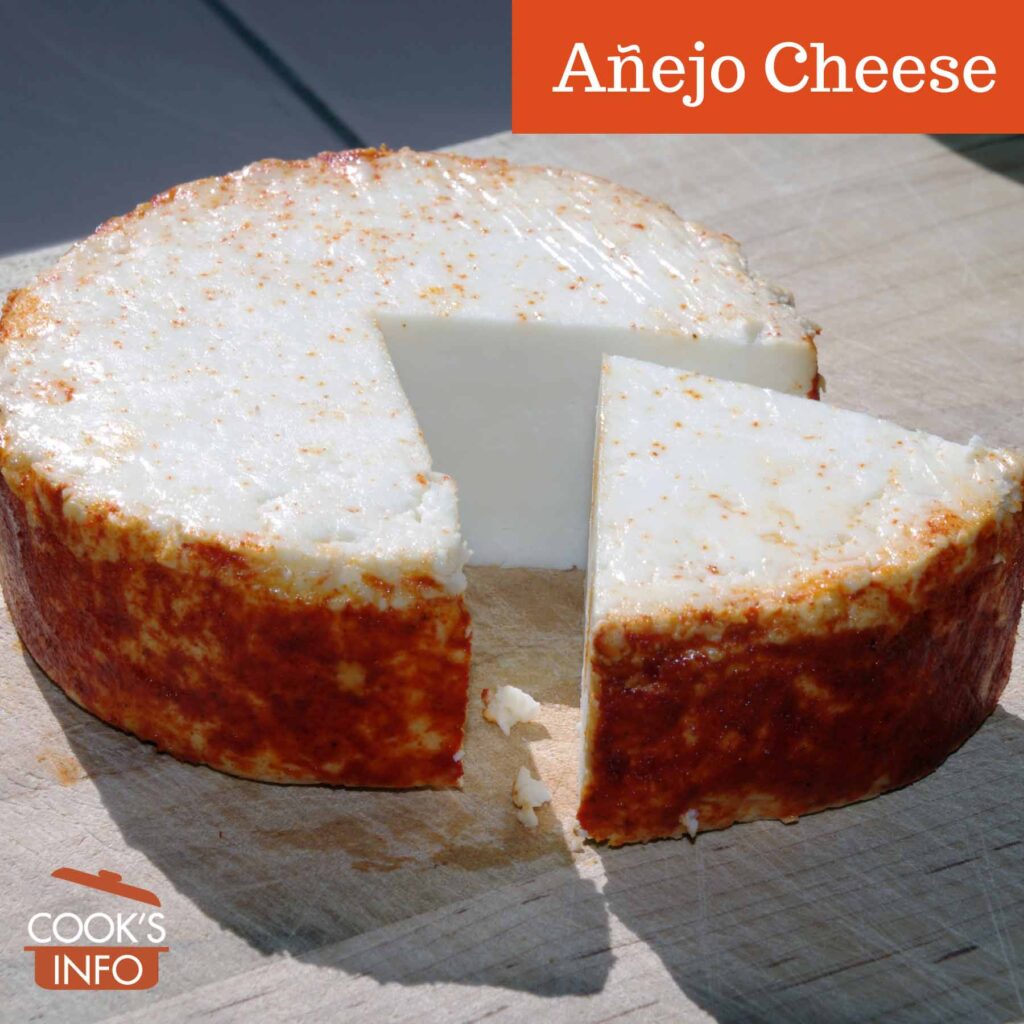
Queso añejo. Glane23 / wikimedia / 2012 / CC BY-SA 3.0
Añejo is a firm, Mexican cheese.
You may encounter it in varying stages of hardness from semi-firm to hard depending on how long it has been aged. Consequently, you will see varying directions for either “grating” or “shredding” it.
Añejo Enchilado
Añejo Enchilado is Queso Añejo that has been rolled in a mildly-spicy coating, usually either paprika, chile powder or a mild chile paste. The blocks of cheese will be bright red or reddish-orange on the outside, depending what they were rolled in, and inside the ivory colour of regular Añejo Cheese.
Production
Queso añejo is actually the cheese called “queso fresco” (which is usually made from both cow and goat milk) that has been allowed to age. As it ages, it becomes solid, dry, salty and crumbly, almost like Romano or Parmesan, though it remains more white than they do, looking somewhat like feta cheese.
Because this starts life as a soft cheese it is often classified as a soft cheese.
Cooking tips
Queso añejo is used as you would Romano or Parmesan, crumbled, grated or shredded over foods or mixed into them.
It can be used to stuff items such as burritos or enchiladas; shredded, it can garnish tacos, salads and soups such as black bean.
Substitutes
Some sources suggest that you could substitute Mexican Cotija cheese (which has a stronger flavour, is harder and more crumbly), but any place that sells Cotija is probably also going to sell Añejo.
You can also substitute Romano or Parmesan, though the taste won’t be the same.
Language notes
“Queso” in Spanish means cheese; “añejo” means aged.

